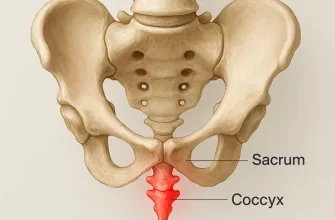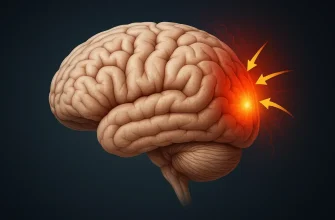Debilitating sciatica pain can cause tremendous discomfort, often affecting one’s mobility and overall quality of life. To alleviate the intensity of this condition, medical professionals may prescribe strong painkillers to manage the symptoms effectively. We will explore some of the commonly used and potent pain relief options for sciatica.
NSAIDs (Nonsteroidal Anti-Inflammatory Drugs)
NSAIDs are among the most commonly prescribed medications for reducing inflammation and relieving pain associated with sciatica. Ibuprofen, naproxen sodium, and diclofenac are some examples of NSAIDs that can be taken orally to manage both the pain and inflammation caused by sciatica. However, these medications may have potential side effects, such as stomach irritation or increased bleeding risk, so long-term use should be monitored by a healthcare professional.
Good NSAID Pain Killers for Sciatica Relief
This list highlights the top 5 NSAID pain killers known for their efficacy in providing relief from sciatica symptoms.
- Ibuprofen:
- Commonly sold under brand names such as Advil or Motrin, ibuprofen is an NSAID that effectively reduces pain and inflammation.
- Ibuprofen works by inhibiting the production of certain chemicals in the body that promote inflammation.
- It is available over-the-counter (OTC) in lower doses and requires a prescription for higher strengths.
- The recommended dosage for sciatica pain relief generally ranges from 200-800mg every 6-8 hours, but it is important to consult a healthcare professional for proper guidance.
- Naproxen:
- Naproxen, available under brand names like Aleve or Naprosyn, is another NSAID commonly used to manage sciatica pain.
- Similar to ibuprofen, naproxen effectively reduces inflammation and provides relief from discomfort associated with sciatica.
- It is available both OTC and in prescription strength.
- The recommended dosage ranges from 220-550mg every 8-12 hours, depending on the severity of pain. Medical guidance is advised for prolonged usage.
- Diclofenac:
- Diclofenac is an NSAID that comes in various forms, such as gel, cream, tablet, or suppository.
- It is available in both OTC and prescription strengths, with different dosages for each form.
- Diclofenac provides relief by reducing pain, inflammation, and swelling associated with sciatica.
- Consultation with a healthcare professional is essential to determine the most appropriate dosage and form of diclofenac for effective pain relief.
- Meloxicam:
- Meloxicam is an NSAID recommended for the treatment of various inflammatory conditions, including sciatica.
- It is available in both oral tablet and suspension forms, as well as in prescription-only strengths.
- Meloxicam works by inhibiting enzymes responsible for inflammation.
- The recommended starting dose is typically 7.5mg per day, which may be increased as needed, under medical supervision.
- Celecoxib:
- Celecoxib is an NSAID prescribed for sciatica pain relief in cases where other NSAIDs are not well-tolerated or contraindicated.
- Unlike traditional NSAIDs, celecoxib selectively targets the COX-2 enzyme, resulting in reduced pain and inflammation while minimizing gastrointestinal side effects.
- Celecoxib is prescribed in various strengths, and the optimal dosage is determined by a healthcare professional considering individual needs and medical history.
Opioids
In more severe cases where the pain from sciatica is intense and other options have been exhausted, doctors might prescribe opioids. These powerful painkillers include medications like codeine, oxycodone, or morphine, which work by blocking pain signals to the brain. However, due to their significant potential for dependence and addiction, opioids are typically prescribed for short-term use and under close supervision.
Tricyclic Antidepressants
Although primarily used to treat depression, certain tricyclic antidepressants, such as amitriptyline or nortriptyline, can have analgesic effects when prescribed for sciatica pain relief. These medications work by altering the chemicals in the brain, reducing pain signals and restoring balance. However, like any medication, tricyclic antidepressants may have side effects, including drowsiness, dizziness, or dry mouth.
Strongest Tricyclic Antidepressants That Relieve Sciatica Pain
1. Amitriptyline:
Amitriptyline is an effective tricyclic antidepressant that can also provide pain relief for those suffering from sciatica. It works by increasing the levels of certain neurotransmitters in the brain, which can help alleviate nerve pain. Amitriptyline is known to have a sedating effect, making it particularly useful for patients who struggle with sleeping due to sciatica-related pain.
2. Nortriptyline: Similar to amitriptyline, nortriptyline is another tricyclic antidepressant that can be used to treat sciatica pain. It works by inhibiting the reuptake of neurotransmitters, which can reduce nerve pain signals. Nortriptyline is also useful for individuals who deal with depression or anxiety alongside their sciatica, as it can address both conditions simultaneously.
3. Imipramine: Imipramine is a tricyclic antidepressant that has shown promise in relieving sciatica pain. By altering the way the brain processes pain signals, imipramine can help to alleviate the discomfort associated with this condition. It is worth noting that imipramine can take several weeks to achieve maximum effect, so patience is required.
4. Desipramine: Desipramine is a tricyclic antidepressant that can be used to manage sciatica pain. It can help reduce the intensity of nerve pain signals by increasing the availability of certain neurotransmitters in the brain. Desipramine is often prescribed at lower doses compared to other tricyclic antidepressants, which may lead to fewer side effects.
5. Clomipramine: Clomipramine, a tricyclic antidepressant primarily used to treat obsessive-compulsive disorder (OCD), can also provide relief for sciatica pain. It modulates the levels of various neurotransmitters involved in pain perception, thereby reducing the discomfort associated with sciatica. Clomipramine may be suitable for patients experiencing both sciatica and co-occurring mental health conditions.
6. Doxepin: Doxepin is a tricyclic antidepressant with analgesic properties that can be effective in managing sciatica pain. It works by blocking the reuptake of certain neurotransmitters, ultimately reducing the perception of pain. Doxepin is generally prescribed at lower doses for pain relief than for depression treatment, minimizing the likelihood of some side effects.
7. Trimipramine: Trimipramine is a tricyclic antidepressant often used to treat depression, but it can also be an option for managing sciatica pain. By altering neurotransmitter levels, it can modify the perception of pain signals transmitted by the nerves. Trimipramine is recommended in cases where other treatments have not provided sufficient pain relief.
8. Amoxapine: Amoxapine, another tricyclic antidepressant, may be prescribed to alleviate sciatica pain. It acts on neurotransmitters involved in the transmission and interpretation of pain signals, reducing discomfort. However, it is worth noting that amoxapine may have a higher risk of side effects compared to other tricyclic antidepressants.
Gabapentin and Pregabalin (Anti-seizure Medications)
Gabapentin and pregabalin, originally developed to manage seizures, have been found to be effective in reducing nerve-related pain caused by conditions like sciatica. These medications work by targeting abnormal nerve firing patterns and decreasing pain transmission. Although generally well-tolerated, side effects may include drowsiness, dizziness, or swelling in the extremities.
Corticosteroids
Corticosteroid medications, when delivered through injections directly into the affected area around the sciatic nerve, can provide potent anti-inflammatory effects and prompt pain relief. These injections can help reduce inflammation and swelling, offering temporary relief from sciatica pain. However, the effects are often short-term, and repeated injections may be necessary.
Strongest Corticosteroid Pain Killers for Sciatica Relief
- Prednisone:
Prednisone, a commonly prescribed corticosteroid for the treatment of sciatica, works by suppressing the immune system to reduce inflammation. This medication can be taken orally and effectively reduces pain, swelling, and related discomfort. Nevertheless, it is important to closely monitor prolonged usage as it may bring about potential adverse reactions. - Dexamethasone:
Dexamethasone is a potent corticosteroid recommended for relieving swelling and pain associated with sciatica. It is available in a variety of formulations, such as oral tablets, injections, and topical creams. Follow your healthcare provider’s advice for proper dosage and treatment duration. - Methylprednisolone:
Methylprednisolone is another effective corticosteroid prescribed for sciatica pain relief. It helps reduce inflammation and can be administered orally, intramuscularly, or through an intravenous injection. It is crucial to adhere to the prescribed dosage and consult your healthcare professional. - Prednisolone:
Prednisolone, a synthetic corticosteroid, is commonly used to alleviate sciatica pain. Available in oral, injectable, or topical forms, it effectively reduces inflammation in affected areas. Careful monitoring is necessary to avoid potential side effects, especially with long-term usage. - Triamcinolone:
Triamcinolone, available as an injectable or topical corticosteroid, is frequently prescribed for sciatica pain management. It works by reducing inflammation, thereby alleviating pain and discomfort. However, it is advisable to undergo a healthcare professional’s guidance for proper administration and duration of treatment. - Betamethasone:
Betamethasone, offered in injectable form, is recommended for individuals experiencing severe sciatica pain. It provides instant relief by reducing inflammation and swelling. Medical supervision is imperative due to potential side effects and to ensure optimal treatment outcomes. - Hydrocortisone:
Hydrocortisone, a corticosteroid available in various forms, including oral tablets, injections, and creams, effectively alleviates sciatica pain. It possesses strong anti-inflammatory properties and can be used for both acute and chronic sciatica cases. Always follow the prescribed dosage and consult a healthcare professional before using it. - Triamcinolone Acetonide:
Triamcinolone acetonide, a long-acting corticosteroid, is frequently administered through injections to provide relief from sciatica-related inflammation. It is essential to consult your healthcare provider to determine the appropriate dosage and frequency of injections to achieve optimal results. - Fludrocortisone:
Even though it is typically used for different medical purposes, fludrocortisone, a man-made corticosteroid, might be recommended for the treatment of chronic sciatica pain. However, it is crucial to closely oversee its usage because there are possible side effects linked to the prolonged use of corticosteroids. - Cortisone Acetate:
Cortisone acetate is commonly prescribed for sciatica pain relief and is usually given through an injection directly into the affected area. Its main purpose is to reduce inflammation, decrease swelling, and temporarily alleviate intense sciatic nerve pain.
Conclusion
While strong painkillers can offer relief from the agonizing symptoms of sciatica, it’s important to remember that each individual’s response and tolerance to medication may vary. Close coordination with a healthcare professional is essential to finding the most effective solution for managing sciatica pain. A comprehensive approach, including physical therapy, stretching exercises, and lifestyle modifications, is typically recommended alongside any pain medication regimen. Using painkillers responsibly and under medical supervision is key to avoiding potential adverse effects and ensuring long-term well-being.









